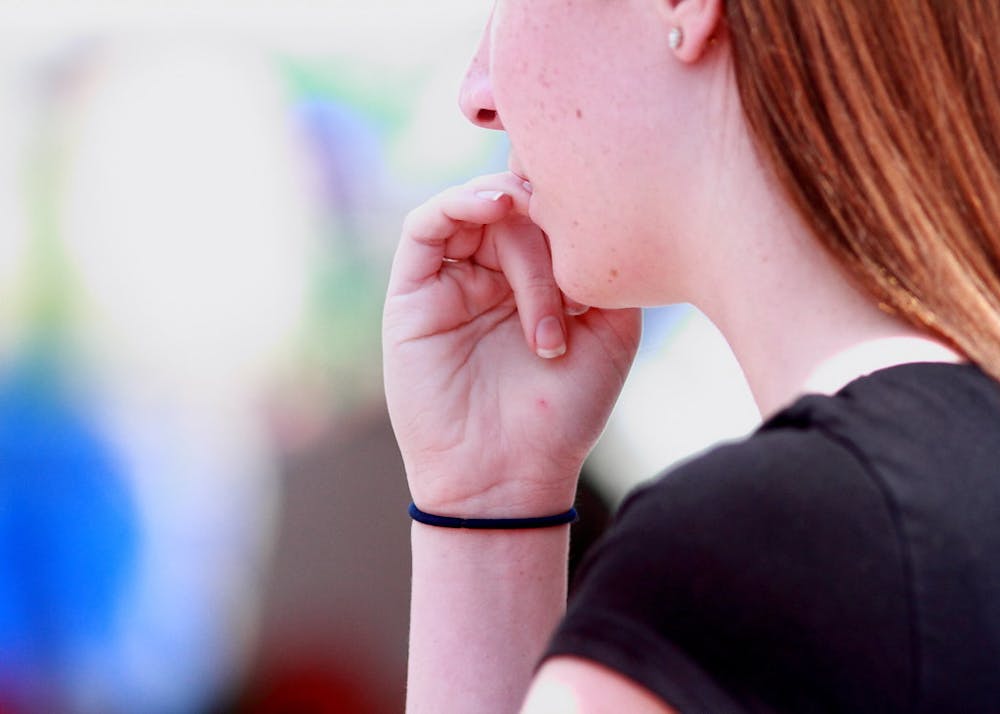The School of Public Health hosted a panel discussion titled “Strategies for Supporting Adolescent Mental Health” as part of the Spotlight Series of events featuring alumni on March 3.
Globally, adolescents have experienced a rapid increase in depression and anxiety during the COVID-19 pandemic. In October 2021, the American Academy of Pediatrics, the American Academy of Child and Adolescent Psychiatry and the Children’s Hospital Association declared a national emergency in child and adolescent mental health.
Dr. Swati Chanani, a child and adolescent psychiatrist at MedStar Georgetown University Hospital, explained during the panel that raising awareness of this mental health emergency, increasing screenings for anxiety and depression during primary care visits and expanding the use of telehealth can be effective strategies.
Chanani elaborated on her comments in an interview with The News-Letter.
“Often, depression and anxiety can go undetected for a long time,” she said. “There’s not always physical signs and symptoms, and parents might not notice that, and teenagers might not know who to talk to about that.”
Chanani also explained how the expansion of telehealth has both increased access to mental health care by eliminating the need for transportation and exacerbated socioeconomic disparities in areas with less access to the internet.
“It’s been a double-edged sword,” Chanani said.
The panelists noted that social media use and decreased in-person social interaction due to virtual schooling have also contributed to the increase in child and adolescent depression and anxiety.
Dr. John Stewart, a resident psychiatrist at Georgetown, discussed Facebook whistleblower Frances Haugen’s disclosure about the danger of social media algorithms during the panel. He explained during the panel that a child can begin viewing healthy recipes on social media and end up on disordered eating and self-harm content because of the nature of social media algorithms.
“[Social media companies] are targeting [children] even before they have much capacity for self-regulation, unfortunately,” Stewart said.
The panelists mentioned that limiting screen time through smartphone settings and parental controls can be another effective strategy to limit the amount of time adolescents spend on social media.
Transitioning back to in-person learning after learning remotely is further impacting adolescent mental health. During the panel, Chanani explained that this change is causing adolescents to worry about physically becoming sick with COVID-19, the health of their family members at home, social anxiety and uncertainty about whether learning modalities will continue to change.
Community interventions, such as vaccination, are another way to mitigate the mental health consequences of the pandemic. The increasing approval of COVID-19 vaccines for younger age groups, along with masking requirements and the availability of COVID-19 rapid tests in schools, has contributed to decreasing anxiety around in-person learning, as Chanani and Stewart explained during the panel.
The panelists also discussed potential increases in bullying with the return to in-person schooling, as well as mental health risks associated with cyberbullying. Chanani explained that one benefit of returning to in-person learning is that teachers have a greater ability to monitor students for signs of bullying.
Combating the stigma associated with conversations surrounding mental health is also crucial, Stewart explained.
“Most people don’t feel comfortable asking about things like ‘Do you feel sad, depressed or suicidal?’” Stewart said during the panel. “Getting ourselves, as adults, used to asking those types of questions in a nonjudgmental way is really important.”
The increase in gun violence, police presence, metal detectors and active shooter safety drills have also negatively impacted adolescent mental health. Panelist Gianella Perez, a doctoral student in counseling psychology, mentioned that minority students, especially Black students, have been disproportionately impacted by these policies.
Chanani said that increasing the capacity of school-based mental health care is one way to combat this. Stewart also brought up the Adolescent Depression Awareness Program in Baltimore, a school-based program to educate high school students, faculty and parents about depression and other mental health disorders that emerge during adolescence. Another is YouthLine, a teen-to-teen youth crisis and support service.
Stewart explained in an interview with The News-Letter that this peer-to-peer model of teaching about mental health disorders helps normalize discussions surrounding mental health.
“One of the things that I see quite frequently as a mental health practitioner is how valuable it is to have a source of meaning in our lives. Helping others is one that really helps us help ourselves,” he said.
Chanani elaborated on how to make adolescents feel listened to.
“There can be a lot of value in being able to relate to who you’re talking to,” she said during the interview. “You just feel safer when you relate with someone.”
Jimmie Lou DeBakey, director of constituent relations at the School of Public Health, attended the panel and expressed hope because of the interdisciplinary nature of the discussion.
“I also felt that sense of hope that a younger generation of highly educated public health thinkers are uniting and expanding the network of mental health, especially in adolescents,” DeBakey said. “If you don’t invest in your youth, the future of your nation is in peril.”
Similarly, Stewart expressed optimism in the resilience of how the U.S. views mental health.
“Even though we are in crisis now and things have been getting worse, I am hopeful for the future,” Stewart said. “When somebody’s in crisis, afterward, there can be an intense period of growth because of what they went through. I’m optimistic that that can be true of us as a country, as well... I’m hopeful that one of those will be a change in how we approach mental health.”





